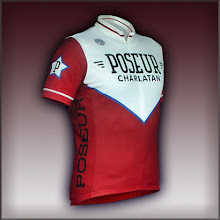On this day I was traveling southbound on the I-820 service road in Fort Worth Texas at around 2:10 PM. I am wearing a ball cap and long pants.
This section transitions from a two lane (with a wide outside lane) to a single lane, and then back to a two lane (with a narrow outside lane) configuration. The single lane becomes the right lane of an on-ramp/off-ramp two lane merge.
I take a Mike Beck Disapproved* lane position throughout. I drive in the left lane in the first (two lane) section and in the right lane in the second (two lane) section. I travel this road often as it best serves my destination considering travel distance and terrain.
It is common for motorists to be annoyed with my presence and express it with their automobile horns. Often, the more impatient motorists will pass me on the shoulder. Even when the road divides into two lanes again I will often get free unsolicited advice from motorists or their passengers as the accelerate past me.
On this day, when I was about midway through the single lane section, I hear on a PA system; "YOU CAN'T RIDE ON A ON-RAMP. YOU MUST USE A SERVICE ROAD!"
I do a shoulder check and observe that it is a patrol car without its lights on.
I turn around and continue on my way as if the officer wasn't there.
The lane divides, and the officer pulls along side of me in the passing lane, pacing me. I see that it is a Ft. Worth Police officer. He wants to talk...
"Cars are piling up behind you", he says. "You are not allowed to ride here."
Defending myself, I say; "I am driving lawf..." He cuts my statement off.
"Hey, your supposed to be wearing a helmet!" He says, as he notices my cap.
"Stop making up laws!" I say. The cop gets a surprised look on his face.
"I'm not making up any laws!" he says.
I turn forward and return my attention to my driving. He moters off, much to the relief of the seven or eight motorists who were trapped behind us.
I continue on my way.
So dear reader, did this officer make up any laws? Is a cyclist allowed to operate on a freeway on-ramp in Texas? Is a cyclist allowed to impede traffic on this road? Is a cyclist required to wear a helmet when driving in Fort Worth Texas? Should I have obeyed the officer's rules when so directed, or the actual laws as passed by our legislators?
*TM This would be the left tire track directly in front of a motorist. Mike Beck disapproves on the general grounds of it being "overly rude". Amusingly, he somehow believes this imperils him when he is cycling on the road in southern California!





